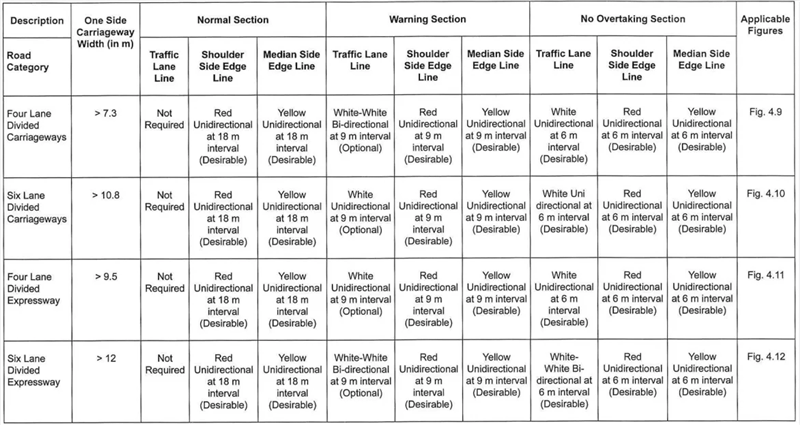The standard requirements for road studs are divided into 3 categories:
First, construction requirements
Road studs should be made of materials that are sufficiently resistant to chemicals, water and UV rays.
The height and width of the road stud must not exceed 20.3 mm (0.80 in.) and 130 mm (5.1 in.), respectively.
The angle between the front of the road stud and the base shall not be greater than 45°.
The bottom of the road stud should be flat within 1.3 mm (0.05 in. ).
The bottom of the road stud should be substantially matte or a substance that could degrade its adhesion to the adhesive.
Second, Performance requirements
The luminous intensity coefficient of the road stud should not be less than the values listed in the following table.
The adhesive used to mount the road stud must be of excellent quality, and the road stud failure due to the strength of the bond must be 1.5 times less than the failure of the road studs.
Table 1: Road stud luminous intensity requirement factor
Third, Physical requirements
Bending Strength - Bend tests the specified F road markings to withstand 909 kg (2000 lbs) without breakage.
Compressive Strength - The road stud should support a load of 2727 kg (6000 lbs) without breaking or significant deformation (3.3 mm).
Lens Impact Strength - When impacted, the lens surface should show no more than two radial cracks, more than 6.4 mm (0.25 in.) long.
Temperature Cycling - When subjected to temperature cycling, cracking or delamination should not occur.
- The road stud installed on longitudinal markings should always be placed in the center of the gap and must not be installed on or on the sides of the line segment.
- Road studs placed on paved shoulder-paved road lanes should be placed outside the shoulder-side edge line and should be indented 50 mm from the edge line.
- For a road stud set on the side of the middle band, make sure that it is not on the middle line marker, but should be within the width of the hard belt or curb, 50 mm from the middle band, and 100 mm from the vertical direction of the raised curb stone face.
- In extreme cases, if the hard bar or bezel is not wide enough to accommodate the desired indentation distance of 50 mm from the edge line, the road stud can be placed near the edge line, or even directly on the edge line.
Road Studs for Undivided Roads
Table 2: Details of placement, color, and spacing of road studs on undivided roads
Road Studs for Divided Roads
 Table 2: Details of placement, color, and spacing of road studs on divided roads
Table 2: Details of placement, color, and spacing of road studs on divided roads
.png)

.png)
.png)

.png)